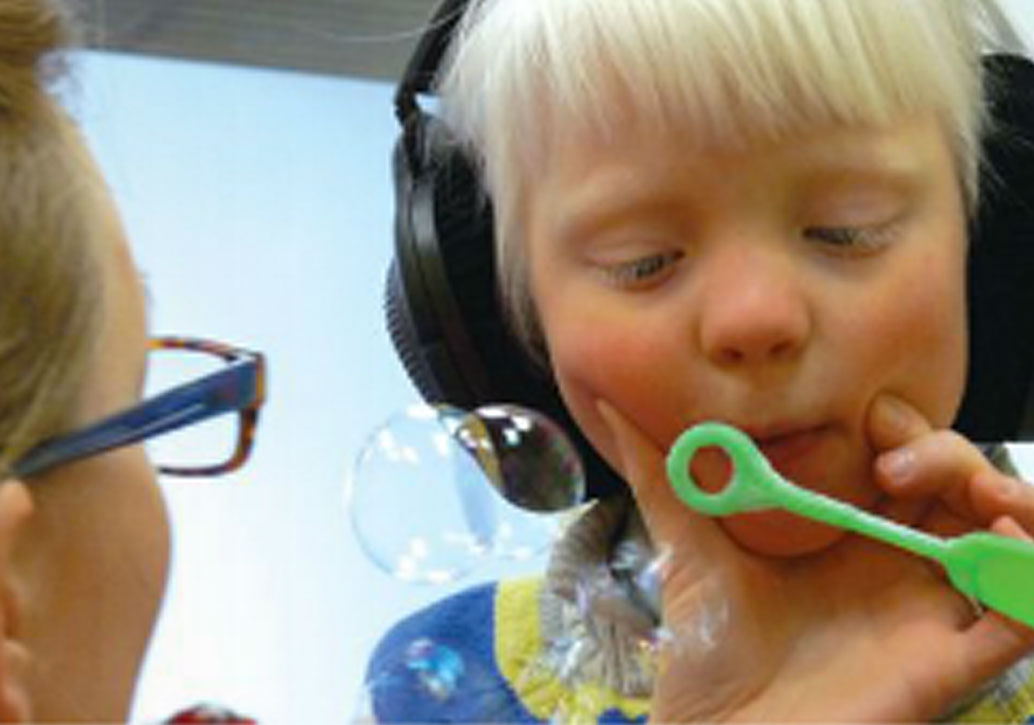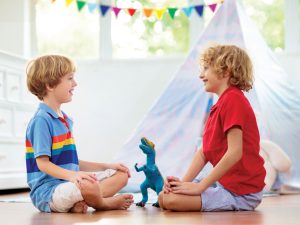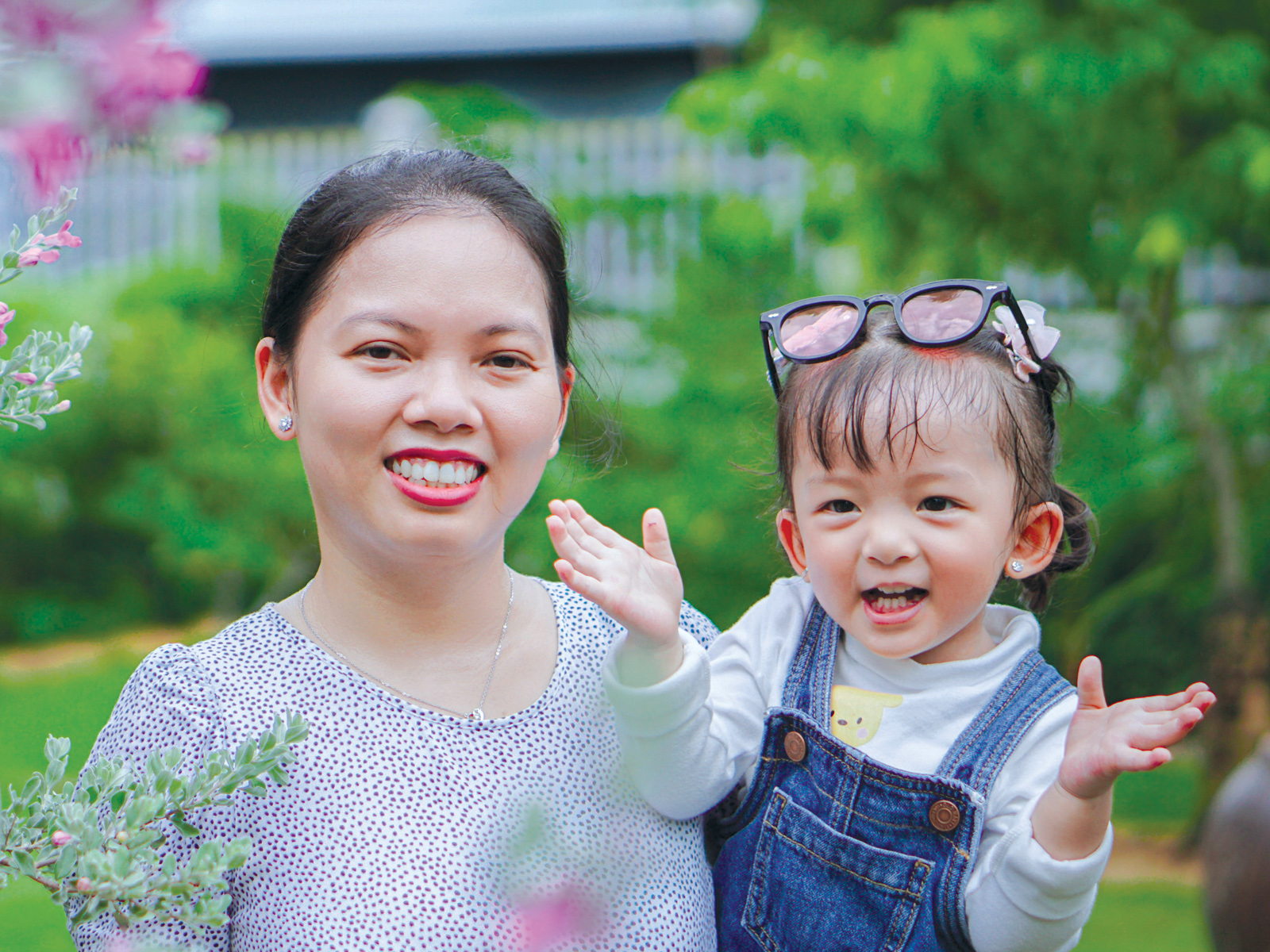One Girl’s Remarkable Journey
By: Jess Robinson
In my years as an occupational therapist, I have had the chance to work with some remarkable children. One such child is seven-year-old Esme. She is a bright and independent girl who actively seeks new challenges. She is affectionate and loving with her family, and enjoys puzzles and books. She also has type 1 oculocutaneous albinism, epilepsy, autism and a broad array of developmental, motor and sensory challenges, is sensitive to light and has moderate to severely reduced sight and involuntary eye movements. Her symptoms are more noticeable when she is tired, angry or anxious and less marked when she is well rested and feeling good.
Difficult diagnosis
When I first started therapy with Esme she had trouble walking, her speech was usually limited to repetition with no conversational abilities and she had limited hand-to-mouth and poor hearing skills. Although Esme’s problems are numerous, I have watched her make great progress in her treatment and blossom into an inquisitive child.
With input from Esme’s mother, a team of therapists agreed upon a number of baseline goals. The collaboration between occupational, speech-language and physical therapists was important to best benefit Esme. We decided to focus on her hearing and language skills, strength, independence, motor planning, posture and self-feeding.
Since Esme’s condition is complicated, we decided to prioritize therapeutic listening sessions. She then moved to a home program, which was supported by weekly clinic-based treatment sessions with an occupational therapist and Biweekly consultations between her family and me. With the improvements she has made, Esme has restarted weekly physical therapy sessions.
A determined spirit
Esme’s progress has been dramatic. She is now able to follow verbal directions with greater accuracy and increased motivation. For example, if she is asked to take groceries into the kitchen then she does so and returns for further instruction.
Esme can also sit with crossed legs and an upright upper body posture for the duration of her activities, whether reading books or eating. She can use a spoon or fork to feed herself for a whole meal with minimal support.
Esme’s auditory skills have also improved. She has started to respond to loud sounds in a busy or noisy background and is able to maintain attention in louder environments. Esme will now turn to look at the person calling her name.
We have seen great changes in Esme’s coordination. Her running is more typical for a girl her age and she moves with intentional and planned actions. Esme is also able to lift a weighted ball above her head with greater ease while maintaining control of her own balance. In addition, she can carry items without dropping them and is able to blow a horn.
We are constantly amazed by Esme’s desire to challenge herself. She is able to solve simple problems and is looking for opportunities to demonstrate independence, such as climbing out of the bath. If an activity is too complex for her to verbally explain it, Esme can nonverbally demonstrate what she wants to do.
She will also take a person by the hand and lead him or her to the item or object she wants to play with. Initially Esme was primarily motivated by food, but now she is typically more encouraged by books, puzzles and social praise.
Verbally, Esme has grown in leaps and bounds. After several months of treatment she is able to use spontaneous speech in context, telling her mother that “Feet keep warm” when putting on her socks or initiating saying “All done” or “No more.” She is also able to respond to questions with minimal or no prompting. When asked, “What do you want?” she is able to answer with an appropriate response such as “A blueberry please!” She now uses her own verbal reminders to support her selfregulation and, for example, will verbally tell herself that she has to wait while her food is being prepared. Esme has started communicating her feelings with words and occasionally speaks in short sentences without prompting.
A mother’s joy
Esme’s mother has worked alongside our team, encouraging her daughter and continuing with the therapy at home. She is delighted in the progress her daughter has made. She tells us that Esme now initiates interactive play with her younger brother and has also started to tell jokes!
“Esme has made significant gains in all areas,” her mother says. “Her speech is more spontaneous, her motor skills have improved, she is more focused and she has learned to blow! Horns, bubbles, anything, but she prefers to give people blows on their cheek in place of a kiss. She is much More stable on her feet and her gait is more coordinated. She can now take a deep breath and blow on command and she is chewing her food better and not just swallowing whole pieces of food.”
The involvement of the family in her therapy has helped give Esme the confidence to meet her goals. I am so excited to see how she interacts with the world around her.
The challenge ahead
Even with all the progress Esme has made, the reality is that her challenges are very severe. That said, Esme is a very determined young girl who is becoming increasingly more motivated to succeed. This appears to be in part due to her recognizing her own progress and seeing her emerging skills. Being able to work with a special child such as Esme has truly been a rewarding experience.
Jess Robinson is an occupational therapist and the site director of blueballoon, Burlington. Her areas of expertise include the assessment and treatment of sensory processing, fine and gross motor skills and life skills.














